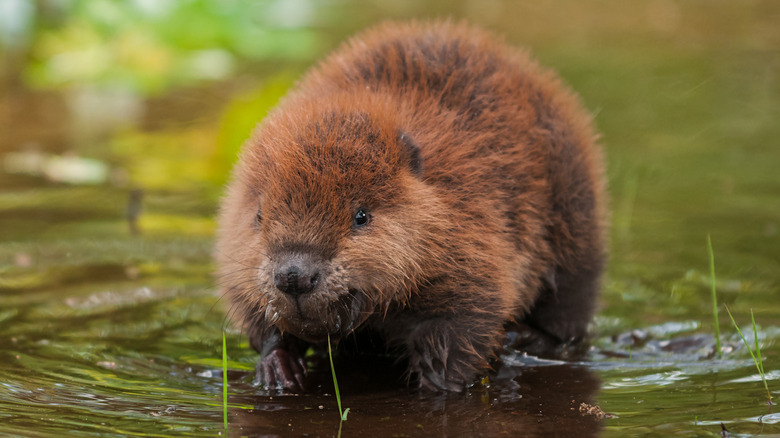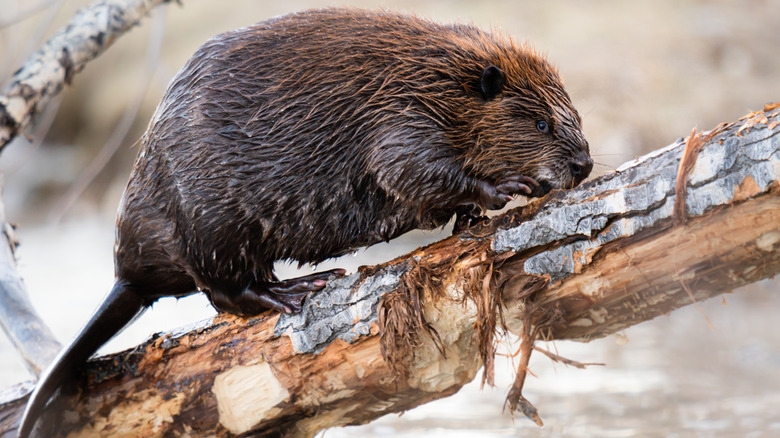The Reason Beavers Were Eaten During The Medieval Era
Like any distant period of history, the medieval era can feel absolutely unrelatable to us. A time without the internet, video game consoles, and lacking the advancements in technology, medical science, and personal hygiene that we take for granted today.
Though the horrors of the Black Death and the scourge of warfare blighted the Middle Ages, it wasn't a purely dark and grim time for humanity. As History reports, the period also brought us remarkable architecture — such as Portugal's Porto Cathedral, a Romanesque masterpiece — and numerous other advancements. The Dark Ages? Maybe not so much after all.
One thing that certainly divided humanity was the feudal system, which saw peasants toiling at the bottom and the richest of the rich sitting pretty in the upper echelons of society. Regardless, religion was an indelible aspect of everyone's lives — no matter how rich they were or weren't. In a curious way, it was also religion that made beaver a common dish on the medieval dining table.
That's one furry fish
According to English Heritage, William the Conqueror set in motion a reformation of the English Church on an incredible scale (with the pope's blessing) after the Norman conquest of the country. The Catholic Church reached the very height of its extraordinary power during the medieval period as the dominant church in this part of Europe at the time (though religious practices themselves differed).
Needless to say, the power of religion during these times was all but absolute. As per The Finer Times, matters of law and government were strongly influenced by the Catholic Church, and the pope was seen as nothing less than God's representative on Earth. Piety was paramount, and society showed its devotion in spades during Lent with the Black Fast. During this time, alcohol (a healthier choice than the water much of the time during this era), meat, and other animal products were forbidden, per Business Insider.
This, then, is how the beaver worked its way into people's diets. As So Yummy describes, fish could be eaten on days that meat could not. The largely aquatic beaver, apparently, counted as a fish ... or rather, its tail did. It's said to taste like fish, too, but you might want to take a medieval peasant's word for that.

